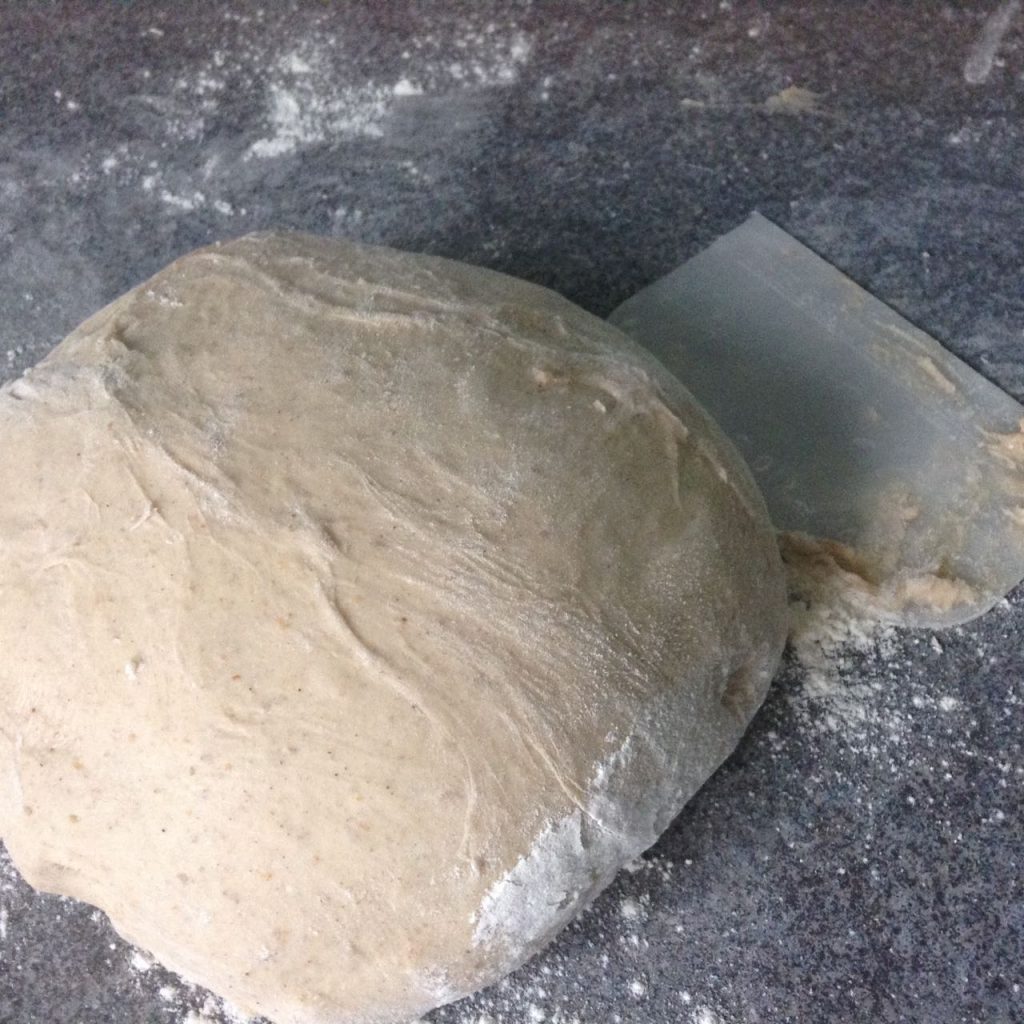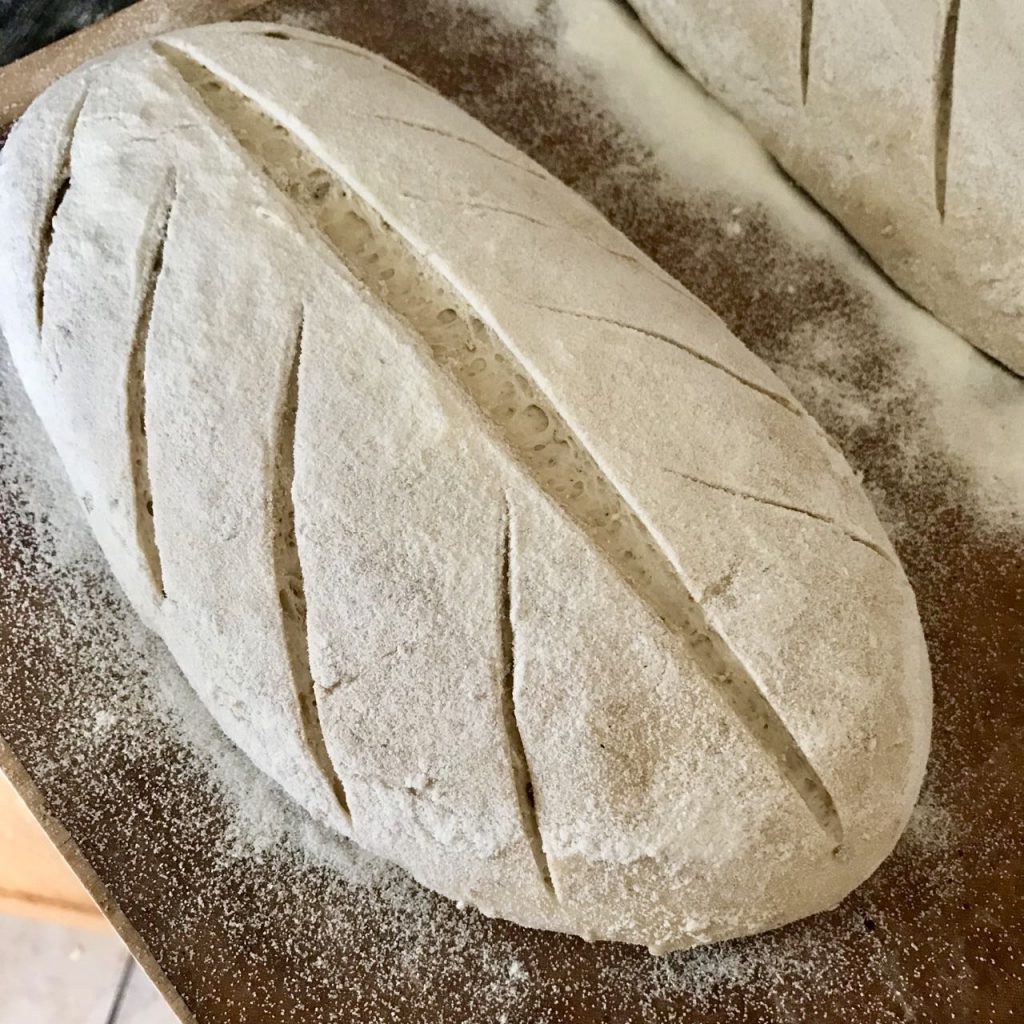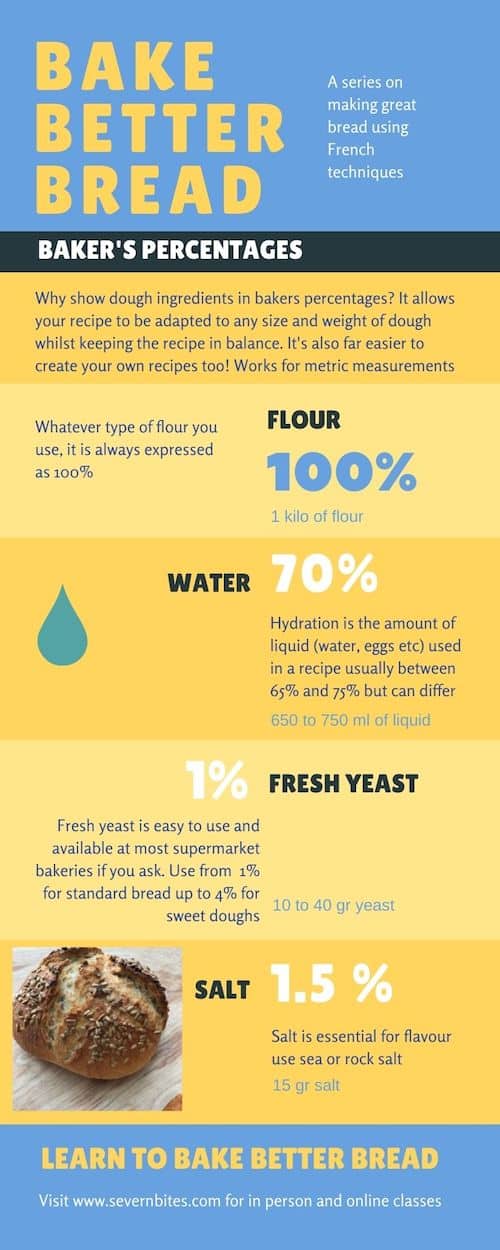Baker’s Percentages will make your bread consistent
When I first learnt about Baker’s percentages, I wondered why on earth I hadn’t heard of it before. Why was this easy way of expressing the ingredients in a bread recipe kept secret from the casual baker? In the latest in my series, Bake Better Bread, I discuss one of the trickier topics to describe but one that will transform your baking.

Bakers’ Percentages are used by most professional bakers. It’s a neat way of expressing the proportions of flour, liquid, yeast and salt in your recipe. You then use these percentages to work out your recipe precisely for set number of loaves of bread or to create your own particular recipe. After all, you may find the flour you use needs a different amount of liquid than the standard recipe.
I’m sharing the baker’s percentages rules I learnt in France. There are some slightly different ways described by bakers that you might come across, but I think this is the easiest one to get to grips with.

I hope I’ve not already lost you with thought of maths. It took me a while, but now I wouldn’t be without them.
It’s all about hydration – the amount of liquid in your dough
Hydration is “the process of causing something to absorb water”. When making bread, it is expression of the amount of liquid you add to a particular flour to make a dough. I say liquid as it might actually be water and oil or eggs if it is a sweet recipe.
Wholemeal flour typically requires more water or hydration than white. An artisan baker may describe her white loaf as having 72% hydration or her wholemeal bread 75% hydration.
Why weighing ingredients makes sense

It’s always better to weigh ingredients for accuracy. For example, if a recipe calls for a teaspoon of an ingredient are all teaspoons the same? Is it heaped or flat? Even graded eggs weigh different amounts. Adding an egg that weighs 50 gr will give different results to one that weighs 60 gr.
This is where you need to use metric measurements when weighing your dough not imperial pounds and ounces. You can use millilitres and grams interchangeably. So always weigh rather than guess.
As a small test just see how much your teaspoon of whatever ingredient actually weighs. It should be 5 gr.
Baker’s Percentages are different
In a recipe, all the ingredients are expressed as a percentage of the flour, so a little different to standard percentages! Baker’s percentages also work with sourdough too!.
A typical yeasted recipe might be:
Flour 100%
Water 70%
Fresh Yeast 1%
Salt 1.5%
A typical sourdough recipe might be
Flour 100%
water 70%
Starter 30%
Salt 1.5%
So, for a kilo of flour the weights would be:
1 kilo (1000 gr) Flour
700 ml Water (multiply by .7)
10 gr Fresh yeast (multiply by .01)
20 gr Salt (multiply by .02)
If your bread recipe has additional ingredients, for example spices or fruit, these would also be expressed as percentages. A hot cross bun recipe might have 20 gr spice (2%) and 60 gr candied peel (6%).
In my recipe for a sweet dough, I use 2 eggs per kilo of flour. The weight of these and water make up the hydration required. The eggs are cracked, weighed and water added to make the amount of liquid required. Eg my 2 eggs weigh 100 gr, I need a hydration of 60% (600 ml) so I add 500 ml of water to the eggs to make them up to 600 ml.
If you’ve made your bread dough and it’s a little dense, you can increase the hydration. As you’ve got your standard recipe, just add on a couple of percentage points and go from there.
Scale up (or down)
Once you’ve worked out your recipe, how do you work out the ingredients required for a different quantity? Say I was asked to make 4 loaves weighing 500 grams each eg a total of 2 kilos or 2000 grams. How do I work out how much flour I need?
There’s a neat way of doing this. Add up the percentages used in your recipe and divide them by the total weight that you need to make. For example:
My standard recipe is:
Flour 100%
Water 70%
Fresh Yeast 1%
Salt 2%
The total of all the percentages is 173.
Divide the total weight of dough required by the sum of the percentages 173 (2000/173) this equals 11.560.
Move the decimal point one space to the left. The weight required is 1.156. Round this up to 1.2 and you have the weight of flour needed.
To prove this works:
Flour 1200 grams
Water 840 ml (1200 x .7)
Yeast 12 gr (1200 x .1)
Salt 24 gr (1200 x .2)
Add 1200 + 840 + 12 + 24 = 2076
As they say in France, Voila!

You’ll never look at recipes quite the same
There are probably various recipes that you use already that use percentages, for instance a shortcrust pastry has half fat to flour. Try the formulas out a few times, it really will make a difference.
And if you happen to have a recipe that you really love that doesn’t use percentages, if you’re feeling bold you can always convert the recipe …

Find out more
Discover more in my Bake Better Bread series.
Choosing and Buying Bread Flour
Let’s talk muffins, bread muffins
Learn to Bake Bread
Join one of my breadmaking courses, there’s plenty to choose from.

The flour would still be 100%. Simply count your sourdough starter as a percentage of the flour. So if you use 200 gr per kilo, that would be 20% of the flour weight. This works because your starter is equal amount of flour and water.
How would these percentages be used for making sourdough, since I don’t use yeast? I use a 100% hydration starter (equal weight amounts of flour and liquid)
Thanks Richard a good tool, but I’ll stick to my calculations!
Hi – I thought you might be interested in this Bread Calculator by @foodgeek.
https://foodgeek.dk/en/bread-calculator/
Thanks Mark. I think that’s the same thing!
I might be reading this wrong, but:
“ Add up the percentages used in your recipe and divide them by the total weight that you need to make.”
And…
“ Divide the total weight of dough required 2000 by the sum of the percentages 2000/173 this equals 11.560.”
I think it should read something like:
“Divide the total weight of dough that you need to make by the sum of the percentages used in your recipe.”